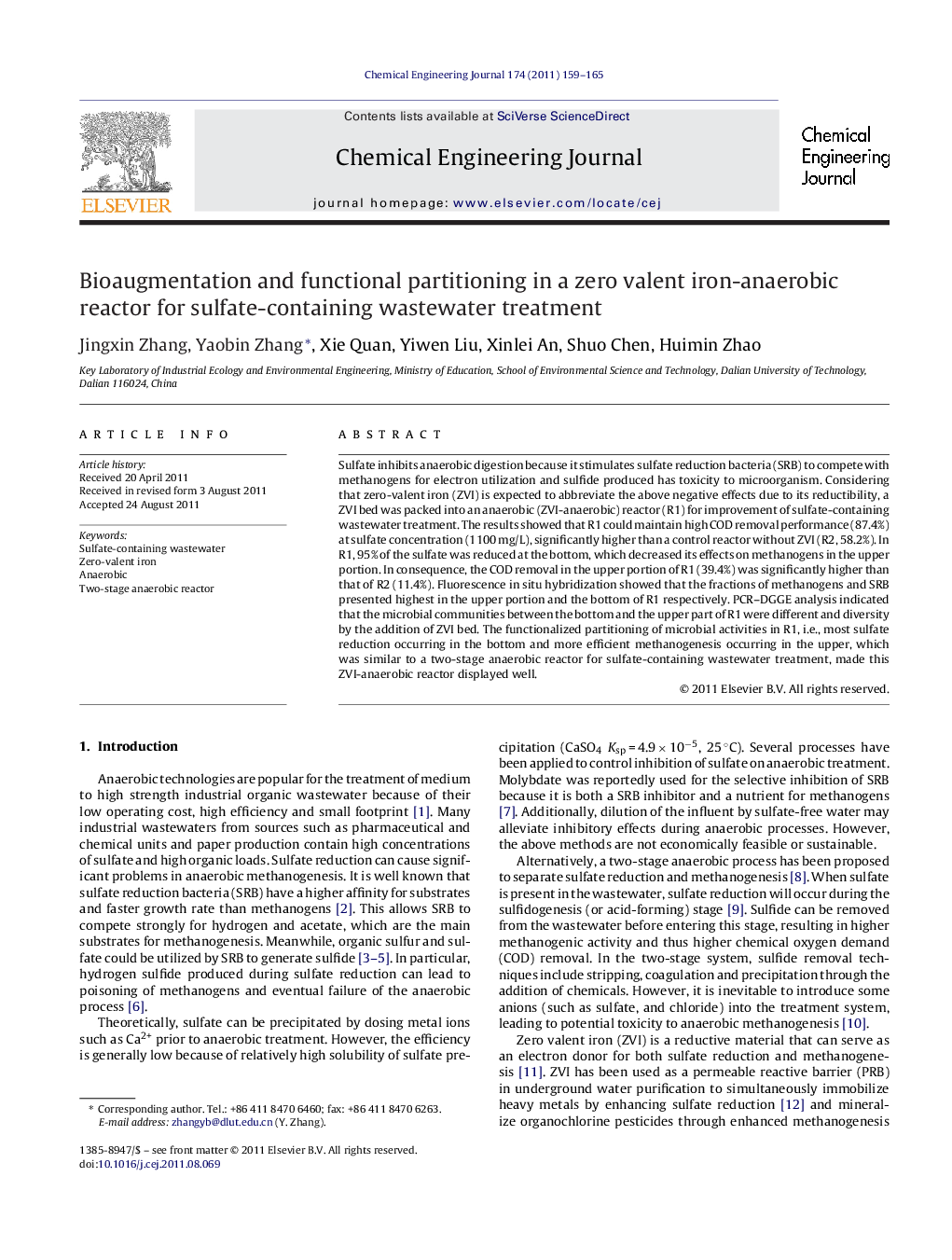| Article ID | Journal | Published Year | Pages | File Type |
|---|---|---|---|---|
| 150517 | Chemical Engineering Journal | 2011 | 7 Pages |
Sulfate inhibits anaerobic digestion because it stimulates sulfate reduction bacteria (SRB) to compete with methanogens for electron utilization and sulfide produced has toxicity to microorganism. Considering that zero-valent iron (ZVI) is expected to abbreviate the above negative effects due to its reductibility, a ZVI bed was packed into an anaerobic (ZVI-anaerobic) reactor (R1) for improvement of sulfate-containing wastewater treatment. The results showed that R1 could maintain high COD removal performance (87.4%) at sulfate concentration (1100 mg/L), significantly higher than a control reactor without ZVI (R2, 58.2%). In R1, 95% of the sulfate was reduced at the bottom, which decreased its effects on methanogens in the upper portion. In consequence, the COD removal in the upper portion of R1 (39.4%) was significantly higher than that of R2 (11.4%). Fluorescence in situ hybridization showed that the fractions of methanogens and SRB presented highest in the upper portion and the bottom of R1 respectively. PCR–DGGE analysis indicated that the microbial communities between the bottom and the upper part of R1 were different and diversity by the addition of ZVI bed. The functionalized partitioning of microbial activities in R1, i.e., most sulfate reduction occurring in the bottom and more efficient methanogenesis occurring in the upper, which was similar to a two-stage anaerobic reactor for sulfate-containing wastewater treatment, made this ZVI-anaerobic reactor displayed well.
► ZVI packed into anaerobic reactor enhanced sulfate reduction and COD removal simultaneously. ► This ZVI-anaerobic reactor was less affected by the sulfate compared to a control anaerobic reactor. ► ZVI serving as an electron donor decreased sulfate stress and buffered acid to reduce the toxicity of un-dissociated H2S. ► The bottom part of the reactor played a primary role in sulfate reduction, while the upper portion was more efficient in COD removal. ► Functionalized partitioning was formed in this hybrid reactor.
